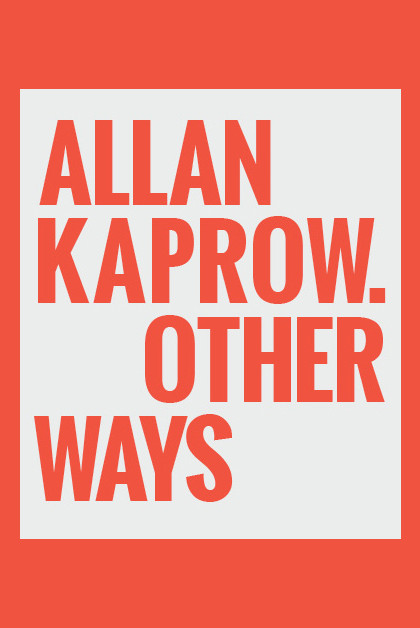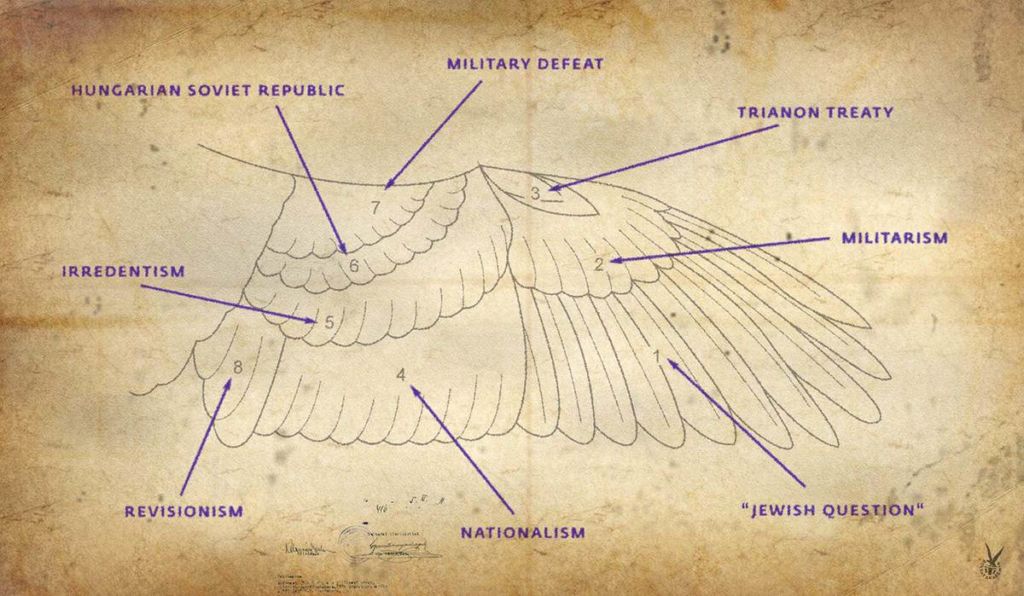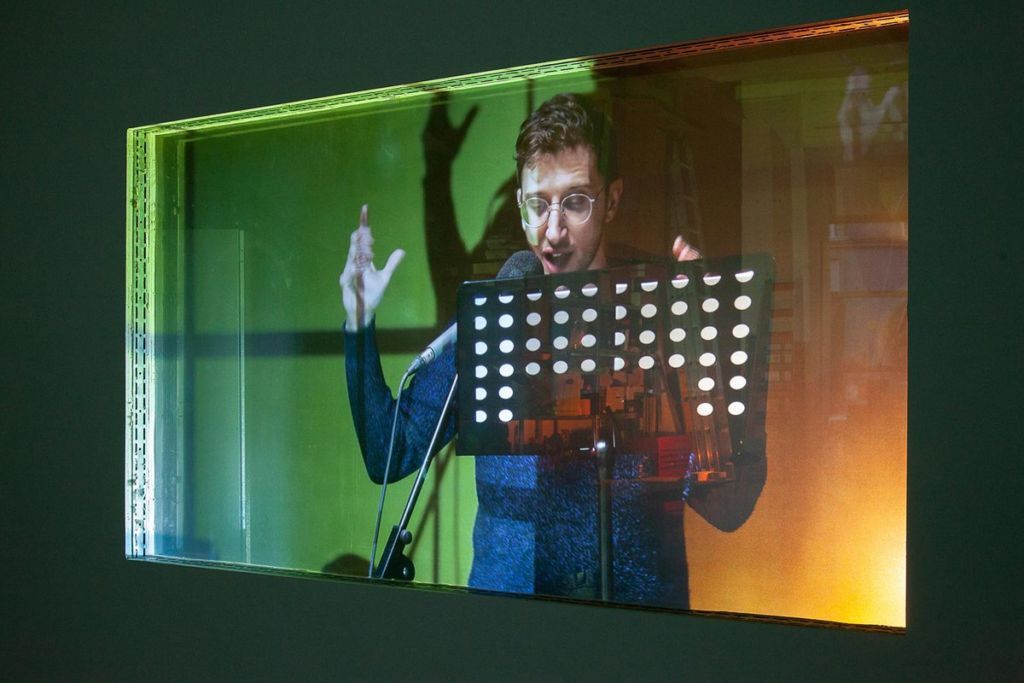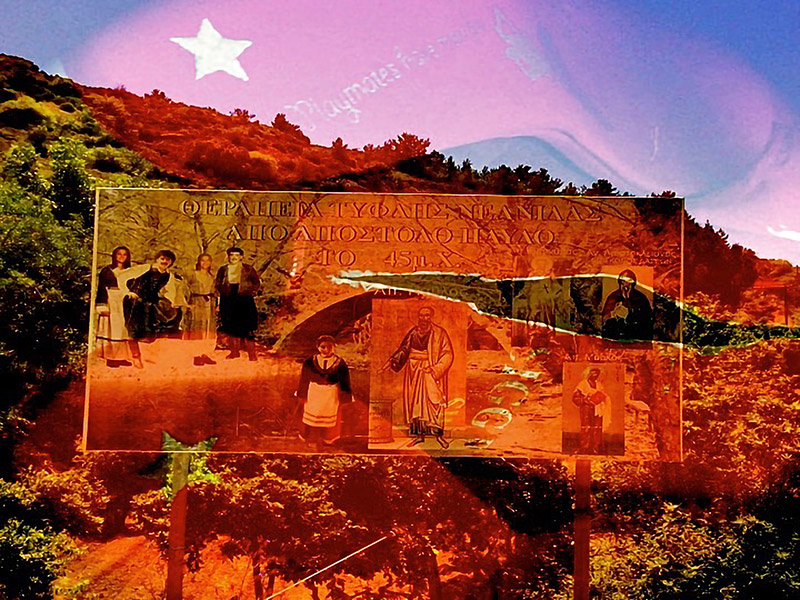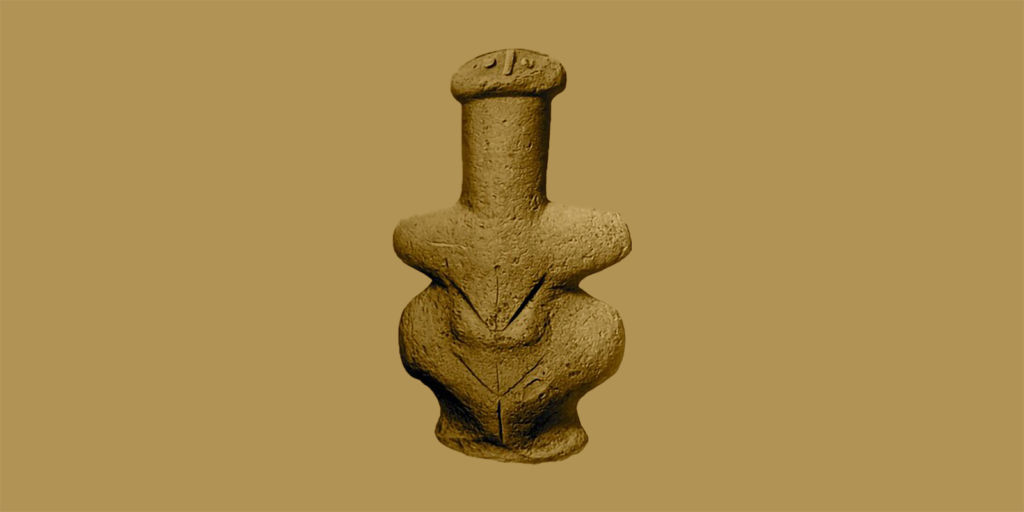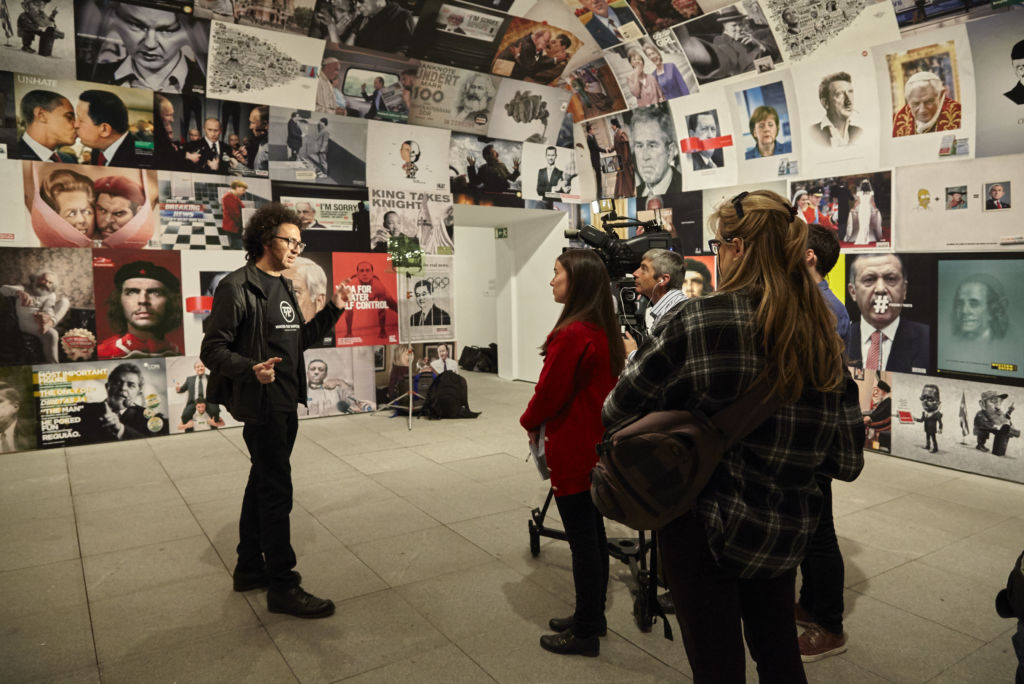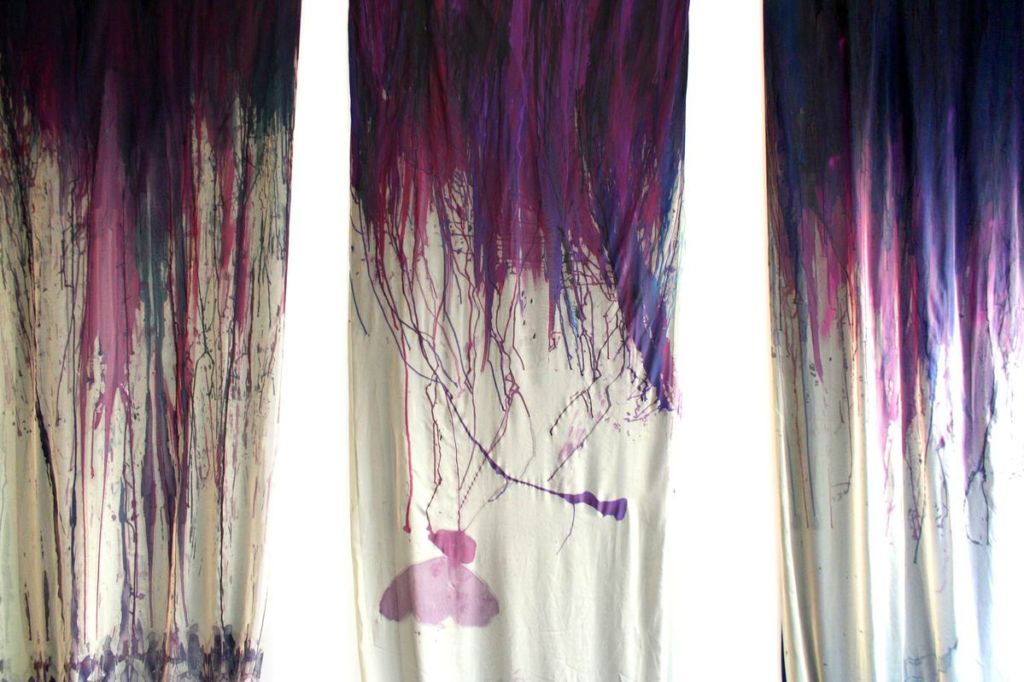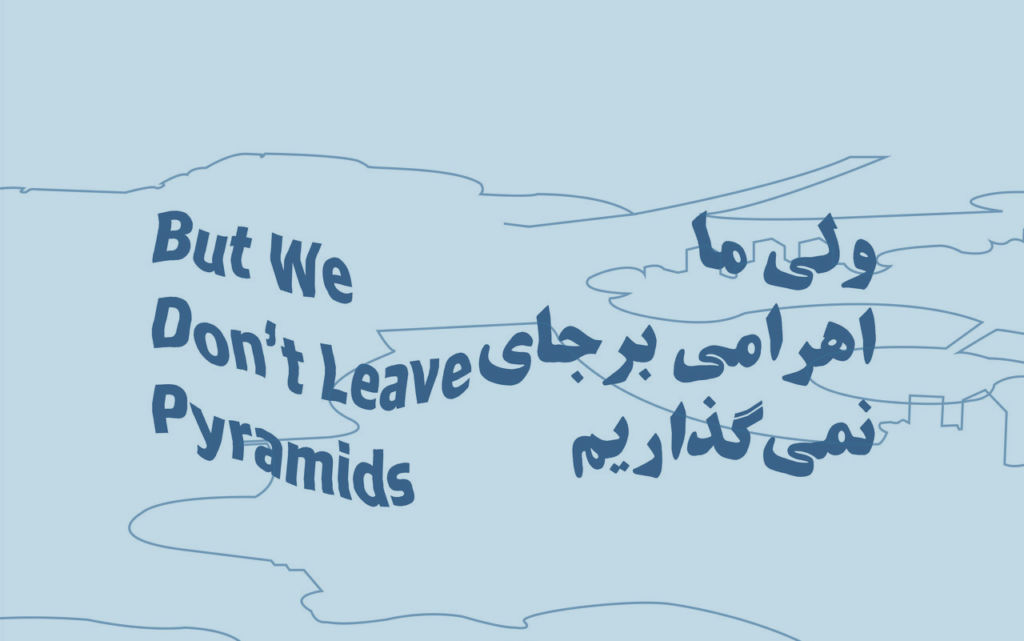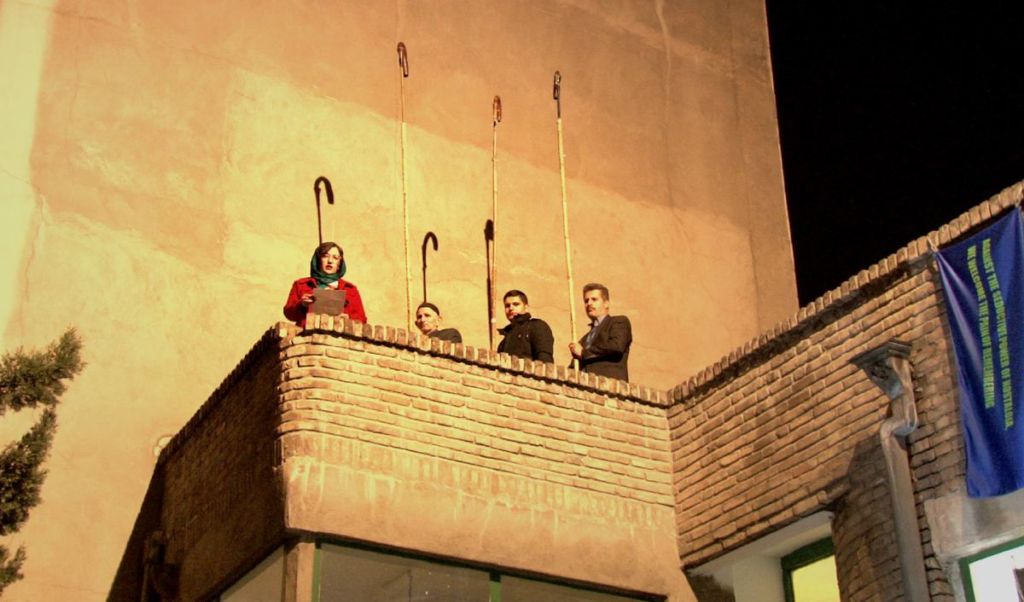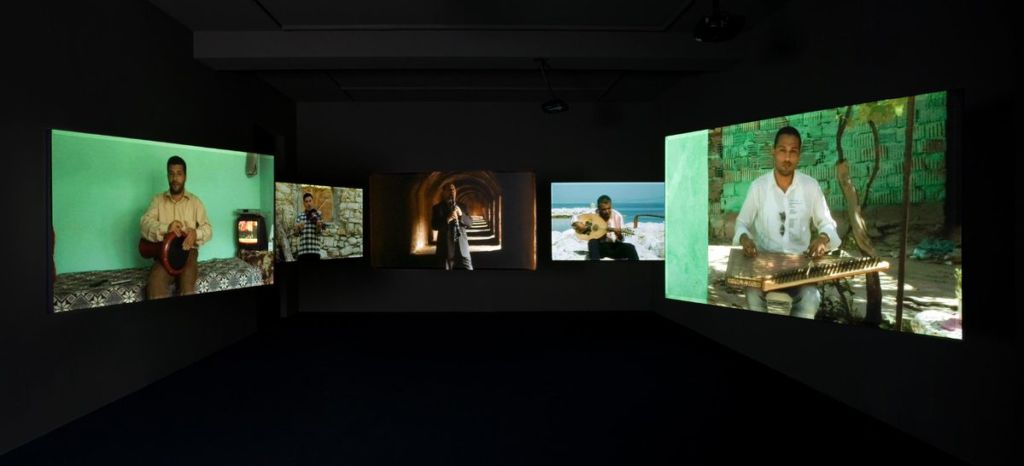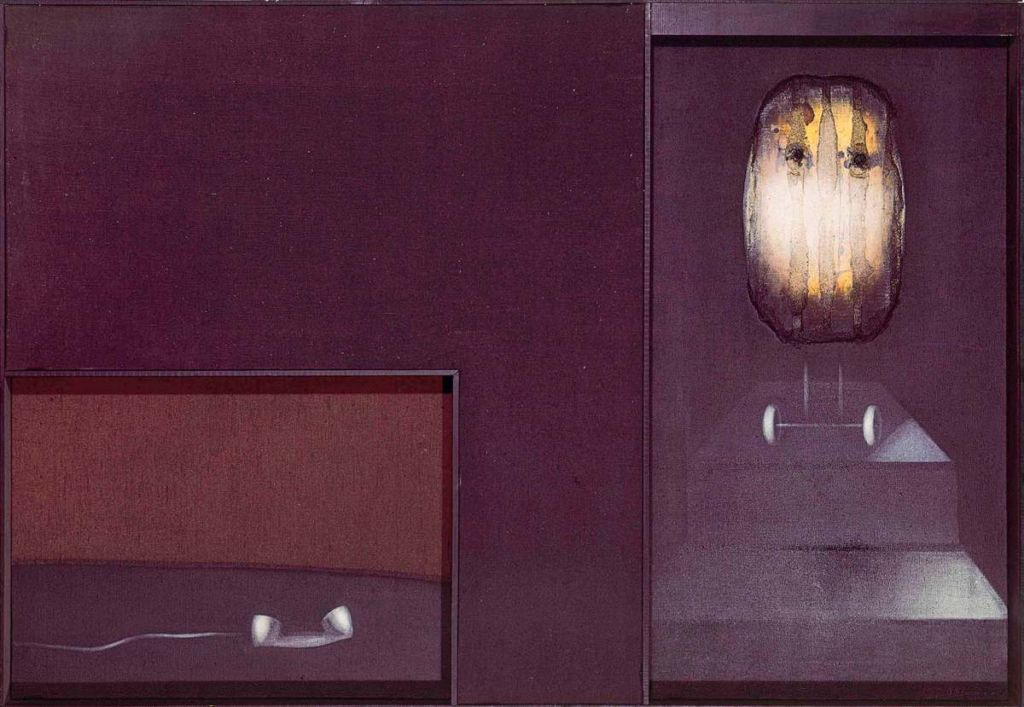Allan Kaprow, Herbert Kohl, Other Ways Project Pedagogy and the counter culture
Investigation by Géraldine Gourbe
Alternative, institutional and radical pedagogical approaches have seen a renewed interest these past few years. This attraction to new forms of education is often based on unique experiments conducted from 1950 to 1970. After her analysis of the Brazilian revolutionary figure Paulo Freire, Géraldine Gourbe looks at the Other Ways Project, an exceptional pedagogical adventure led by artists Allan Kaprow and Herbert Khol at the height of the counter culture movements on the US West Coast in the late 1960s.
Theodore Roszak, The Making of Counter Culture: Reflections on the Technocratic Society and Its Youthful Opposition, Oakland, University of California Press, 1968-1995.
Allan Kaprow’s personal archives, Getty Research, Los Angeles.
Ibid.
Jeff Kelley, Childsplay: The Art of Allan Kaprow, Los Angeles, University of California Press, 2004, p.142.
John Dewey cited by Jeff Kelley, op. cit., p.142.
Unpublished interview conducted by critic and feminist Moira Roth in Pasadena in 1973 and conserved in Kaprow’s personal archives at Getty Research.
Concept he will develop throughout the three-part series from 1968 to 1973, The Education of the Un-artist.
Unpublished interview conducted by critic and feminist Moira Roth.
Ibid.
Jeff Kelley citing Allan Kaprow, op. cit.., p.158
Margaret Mahoney from Carnegie offers him a grant to experiment with pedagogy, with the added requirement that Allan Kaprow also design and guide a training program for the teachers. See Herbert Khol, The Discipline of Hope, Learning from a Lifetime of Teaching, The New Press, New York, 1998.
Géraldine Gourbe, In The Canyon, Revise The Canon : Savoir utopique, pédagogie radicale et artist-run community art place space, Rennes, ESAAA/Shelter Press, 2015.
Jeff Kelley, op. cit., p.143.
Herbert Khol, The Discipline of Hope, op. cit., p.275.
Ibid.
Ibid.
Paulo Freire, Pédagogie des opprimés, Paris, François Maspero, 1974.
Noah Purifoy was the curator of one of the first exhibitions on Junk Art, in 1967, which included, amongst others, black artists such as Bettie Saar and himself.
http://history.berkeley.edu/sites/default/files/Learning%20from%20Watts%20Towers.pdf
Allan Kaprow “Success and Failure When Art Changes” in Suzanne Lacy, Mapping the Terrain: New Genre Public Art, Seattle, Bay Area Press, 1995, p.154-160.
Such as the insult “Fuck”.
Judith Delfiner, Double-Barrelled Gun – Dada aux États-Unis (1945-1957), Dijon, Les Presses du réel, 2011.
Maxime Cervulle, “Penser la blanchitude. Dynamiques épistémologiques” in Dans le blanc des yeux. Diversité, racisme et médias, Paris, Éditions Amsterdam, 2013, p. 47-74.
Jeff Kelley, op. cit., p.155.
Allen Ginsberg was a founding member of the Beat Generation. See Philippe-Alain Michaud, Beat Generation, New York, San Francisco, Paris, Centre Pompidou, 2016.
Hippie Modernism: A Struggle for Utopia, Minneapolis, Walker Art Center, 2015.
Andrew Blauvelt, “Hippie Modernism: Aesthetic Radicalism and Counterculture” in Hippie Modernism: A Struggle for Utopia, op. cit., http://www.walkerart.org/feature/2015/aesthetic-radicalism-counterculture
While participating in Other Ways, Sim van der Ryn was targeted by the police, particularly People’s Park, his collaborative project developed in the Bay Area. The project was to create an eco-village based on the life forces of the Free Speech Movement, which had multiplied on the Berkeley university campus between 1964 and 1965. Following the arrest of student Jack Weinberg, a political activist on campus, a crowd of students blocked a police vehicle for 32 hours and demanded freedom of expression at the university, including for political activists. The movement took over and changed how teaching is conducted at universities.
Lorraine Wild cited by Andrew Blauvelt, op. cit.
Jeff Kelley, op. cit., p.145.
Activities, contrary to happenings, are actions that, according to Allan Kaprow, are less theatrical, less monumental or spectacular, and more directed at experiencing a performative task, in a small group. The idea of public or event disappears to make room for experimentation and feedback between participants. Their more confidential nature had an impact on Allan Kaprow’s more tenuous current events.
On the eve of the publication of The Making of a Counter Culture1, which would be widely released and become the basis for theorizing the North American counter culture, Allan Kaprow was carefully writing an introduction to the collaborative project Other Ways. His solid argumentation for various versions of this artistic educational program was a testament to the passionate interest he held in pedagogy. “The title of this project,” he writes, “insinuates a pluralist approach to education: no one way is correct in itself, there are always several options2.” Kaprow sought to demonstrate how happenings, as an art form, could revolutionize a common good such as education: “As an exclusively social art form, happenings show an expanding trend in art, away from the intellectual tradition of alienation and toward interpersonal relationships. What’s more, the happening is already recognized as offering a method—a game—for students recently involved in traditional educational models3.”
Sources for the Other Ways project
This desire to reform education through play and games formed as Allan Kaprow was preparing his first happenings. During their years of study together, George Brecht, Bob Watters and their friend Allan Kaprow passionately referred to the innovative teachings of John Cage4 and their numerous applications. Improvisation and game-based sessions came to substitute the repetitive and laborious learning based on the principles of a master. For the students, Cage’s pedagogical haikus sparked a more creative, collaborative and joyful kind of transmission. During the composer’s classes, theory and music history gave way to experimental poetry imbued with Zen Buddhist philosophy. The “method” behind the happenings, as Kaprow mentions in his introduction, derives from this Cagian spirit, which is itself a relentless philosophical quest that begins with experimentation, a transversality of subjects and activating the sensory-sensitive in spectators and participants. “Those who do, know5”, is what another of Allan Kaprow’s intellectual fathers would say, the great visionary who saw noble relationships between pedagogy and art: John Dewey. In fact, this paradigm change in art consisting of John Cage’s students, and Cage himself, collectively adhering to the gratuity of artistic doing and of artistic play, cannot fully be understood without examining the legacy transmitted by Marcel Duchamp.
In 19736, Allan Kaprow returned to the reasons why he so admired the French Dadaist, and explained precisely what about him heralded the un-artist7 , a term which appears in a three-part essay entitled The Education of the Un-Artist, published between 1969 and 1974. The pioneering experience of Other Ways, which aimed to recast schooling through the method of a happening, largely inspired the writings for Part I, the first essay in the trilogy. American art critic Jeff Kelley recalls how, according to Kaprow, artists found themselves in a delicate situation following WWII because the ideological and horrific human consequences led them to doubt everything, including the very definition of art. And so Duchamp represented, for Kaprow, the very prototype of an un-artist. Free to live the life he chose, far from representing the artist-martyr, Duchamp questioned the very idea of art. His attitudes, perceive as European—his dandyism, the apparent disinterest in life’s contingencies, his indifference to the exhaustion and sweat of work—and his artistic gestures—the ready-made, the secret, erasure, suspending judgments made on taste—shook up the codes of recognition, validating or invalidating what art is made of and who makes it. And so Allan Kaprow admits: “George Brecht, Bob Watters and myself were all astounded by the liberating effect of questioning the entire idea of art8.” Moreover, Kaprow continues, the un-artist is the bearer of a fiction that could give rise to a personal mythology much like Duchamp’s: “This is how I call it, today, in 1973. I’m inventing my own Marcel Duchamp: my fiction, after all, if Duchamp interests us, it’s because we each have our own fiction9.”
This two-fold liberating effect with regard to an ontological and historiographical position on art involves restoring the links between art, experience and daily life, which, until then, had atrophied. Precisely at this junction is where one can draw the cardinal lines of descent (Dewey, Duchamp and Cage) for the Other Ways Project initiator. The un-artist must break from the modernist principle of art as an autonomous and isolated discipline. The Other Ways adventure worked hard at this. Play and imitation would become life-saving resources for art and pedagogy, whose contours grew in definition as the three essays on education by the un-artist developed. The texts persistently thwarted the spectrum of imitative literalness, opting instead for a strong affinity with pre-existing mimetic forms: “In this ‘imitation of life’, Kaprow divines a ‘cosmic happening’ in which everything imitates everything else: city maps are like circulatory systems, computers allude to brains, the dramatized children’s games ape adult behavior10.” For the un-artist, the repeated task consisted of copying by pretending to imitate: the classroom turned into the perfect ground for research.
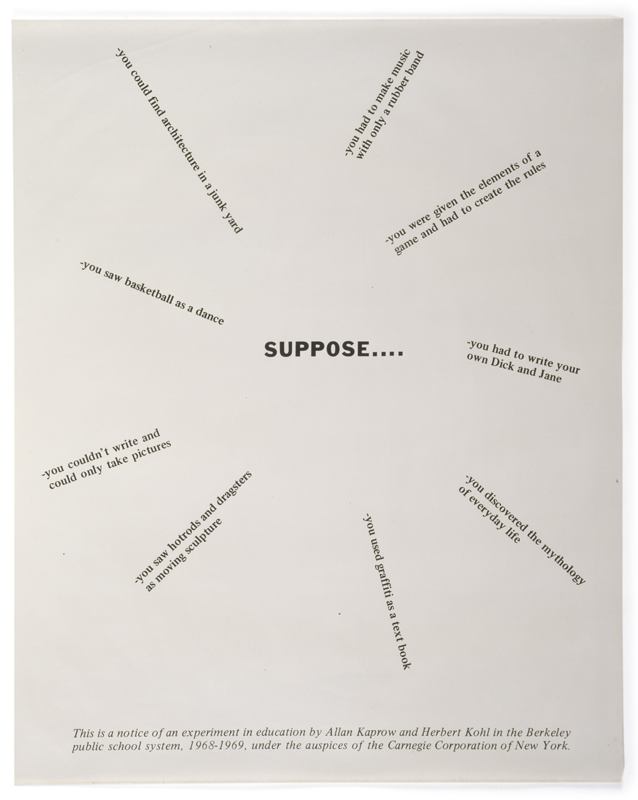
Allan Kaprow, Suppose, 1968-1969. Poster for “Project Other Ways”
© Allan Kaprow Estate, Courtesy Hauser & Wirth
SUPPOSE you use graffiti like a text.
After attempting in vain to bring the Other Ways Project to schools and universities in New York, Kaprow’s initiative was awarded a generous grant from the Carnegie Corporation of New York. The foundation was the project’s commissioner and originator for the team composed of Allan Kaprow, called in to fill the organizational needs for an “artist-teacher”, and “writer-teacher11” Herbert Khol. Thanks to Khol’s professional network, Other Ways Project anchored itself in the California Public School System in the Bay Area, for five days a week throughout an entire school year, from September 1968 to June 1969. One to two times per week, upon the co-directors’ initiative, different workshops were scheduled. Khol liked to remind that the counter culture context in California was an ideal setting for a new discipline to emerge: critical pedagogy12. Throughout that school year, Other Ways Project was committed to bringing contemporary art forms and living artists to the heart of public education. The experiment’s originality not only lied in encouraging the artistic talents of teachers and their students in different disciplines, but also, and more importantly, in nurturing the imaginary processes familiar to painters, composers, dancers, directors, poets, etc.… in primary school children and educators.
Another characteristic of the Other Ways Project: artistic processes were envisioned for their organic virtues, the starting point for enjoyment. The directors were deeply convinced that learning could benefit from imagination and creating things oneself, rather than competing for diplomas and specialized skills. And so the campaign to call for participants, SUPPOSE, reflected the project’s ambitions. In the halls of several primary schools hung a mysterious poster depicting a classroom empty of students and teachers, proposing equally mysterious actions related to the word: SUPPOSE. The poster read: “SUPPOSE you could use graffiti like a text”, “SUPPOSE you couldn’t write or take any photos”, “SUPPOSE you had to make music with just a rubber band13”, etc. The direct verbs in Kaprow’s scores reflected the embodiment of the virtues of an un-artist education. The subversion of schooling was underway, through the guidance of Kaprow’s forefathers: John Dewey, Marcel Duchamp and John Cage. The revolutionary dimension of Other Ways made it the emancipatory banner of the late 1960s: “We were pioneers building a new and more just world by working with children, particularly children from poor families14.”
Local communities.
The other important point that Kaprow and Khol committed to for the Carnegie Corporation had to do with involving artists in Bay Area local communities. Many people, including the artists, Kaprow included, had been recruited outside of these social groups: regardless, the interest in “real environments” and their “inhabitants15”, for the most part Black Americans and Hispanics, was primordial. The Carnegie Corporation, concerned with social and cultural redistribution, surely modeled this on another unprecedented educational and artistic program initiated by assemblage artist Noah Purifoy.
In August 1965, the young artist Noah Purifoy participated in the violent riots in Watts, southern California, accompanied by his art students. Faced with this outpour of violence, injustice and impartiality, Purifoy felt the need to collect the shreds of cloth and shards of glass leftover from the confrontation between the black residents of the Watts neighborhood and white police officers. The artist wanted to believe in the redemptive potential, in the Dewey-an16 sense, of such an artistic practice. The classes taught at Watts Art Center had little to do with the essence of art, art history or even esthetic forms. Purifoy’s educational goal was more collective and social than ontological, a position with clear affinities to those mentioned earlier. Purifoy was concerned with the images each person has of their environment and how they relate, and he suggested ways for these images to collectively co-exist. Using a principle similar to Paulo Freire’s generative themes as described in Pedagogy of the Oppressed17, he encouraged his students to build their own representations of a revolutionary world. He created a link between the art of naming then assembling, and creating a model for an imagination of the emancipated. Through the real-life application of what Noah Purifoy18 had, for the first time in 1967, theorized and designated Junk Art, the regulars at Watts Center could experience the self-transforming potential with others thanks to the new images and kinds of knowledge they catalyzed: “We believed that the art experience could be transposed to any other domain of their (daily) activities and if they had a nice experience with us at Watts, a positive one, they could leave us strengthened by this learning… off to school or elsewhere. We tried to see how that could be possible, how to connect the process of art with existence19.”
While reading the posthumous account of the Other Ways20 adventure as narrated by Kaprow, it’s interesting how, three years later, on the California coast, the radical intentions had been similar to Purifoy’s, and in the same context of powerful racial ostracism. Twenty years after the experience, Kaprow proudly recounts how the Other Ways Project was committed to children, often Black and Hispanic, in school but relegated to the margins of knowledge by the educational institution because their teachers considered them illiterate.
Four letters.
A few weeks in to Other Ways Project, Kaprow decided to hand a cheap camera to every student and as much film as they needed. During their excursions around the neighborhood where their showcase space was located—with the school’s permission, and granting Other Ways an opening onto the street and public space, unlike the closed space of the classroom—Kaprow encouraged students to take pictures of whatever called their attention. On the one hand, they photographed each other, their shadows mixing with those of helicopters flying overhead or the silhouettes of army tanks. The repression at Berkeley in spring ’69, ordered by governor Ronald Reagan, was omnipresent, recalls Kaprow. On the other hand, the students from this burgeoning school paid a lot of attention to graffiti. Kaprow found it curious that these slogans and names covering the walls in the street should fascinate them so, because if these children were truly illiterate, how did they manage to read them? Indulging their curiosity about graffiti of a more sexual nature, Kaprow had them visit public restrooms. He let the girls enter the boys’ bathroom and vice-versa so they could take even more photos. It was clear that these elementary school children could read and understand what Kaprow modestly called ‘four-letter words21’. He and Khol committed themselves to promoting an original way of teaching reading and writing.
Kohl and Kaprow then covered the Other Ways showcase room in brown paper and asked the students to bring in all their photos, hang them up, paint them and make drawings. Throughout the process, the young students had fun collectively creating links, much in the manner of Purifoy. Names of people such as Bobby Huey—active member of the Black Panthers, at the time in prison—, Hugo Chavez, then the head of the Bolivian Revolution, or Bobo, a leader of a Latino gang, became detached from the image-word arrangement.
Over the following days, students told real and fictitious stores that mixed with the hodge-podge of graffiti pictures. Kaprow and Khol managed to get a hold of some outdated reading manuals, the recently obsolete Dick and Jane books that were plainly vestiges of patriarchal white society. They asked the students to re-do the illustrations. Many illustrations were cut out and replaced by drawings. Dick and Jane, for example, turned into monsters with an impressive rainbow of hair colors. The texts were re-touched with pertinent irony. Proud of this experiment, Kaprow and Khol decided to exhibit the manuals, re-worked and corrected à la Other Ways Project, in their showcase window.
The educational alternative was a frank success. Students on the verge of exclusion could re-enter the classic school curriculum. The un-artist education, which relies on playing and games, even called into question the final evaluations of certain teachers as to the irreversible illiteracy of marginalized children.
Bringing forms of counter culture to schools
Bolstered by their involvement with local communities, Kaprow and Khol launched publications to relay literature and cultures from the African-American or lesser-known communities such as the Nuyorican community (Puerto Rican culture in New York). Poet Victor Cruz, a recognized cultural actor in the Nuyorican movement, joined the Other Ways Project through writing workshops. There, he brought in the emancipatory values of Puerto Rican poets, musicians, and intellectuals that had suffered insults and discrimination due to their immigrant background. Modeled off the slogan Black is Beautiful—from the political culture of a Black community seeking to liberate itself, amongst others, from the pastoral rigor of civil rights activist Martin Luther King Jr.—, Cruz proudly distilled a fermenting, flamboyant cultural difference that shone in its desire to exist in intimacy and collectivity. With Allen Ginsberg—an openly homosexual poet—as his godfather, Cruz embodied the line of descendants from the Beat Generation’s counter culture, heavily influenced by the Dadaists22, to the growing liberation movements of communities struck by the repeated effects of a culture of whiteness23. His collaborators questioned the spirit of John Cage, who seemed content to repeat at various conferences and in publications: “Why change the world, we might change it for the worse?” In particular, Kelley associates many 1950s American artists’ refusal to be politically engaged with the harmful witch-hunt enacted through Senator Joseph McCarthy’s policies24. And yet, contrary to the political positions of one North American east coast avant-garde figurehead, John Cage, also homosexual, on the west coast Allen Ginsberg was recognized and admired by the younger generations for his risky public stances on the muzzling of artistic expression. Incidentally, beat25 was a major inspiration for emerging assemblage practices—including Purifoy and Kaprow—and the idealism behind the Other Ways Project that mirrored the struggles unfolding at Berkeley in 1969. At the heart of this impressive history of critical pedagogy, the collaborations between Mike Spino and Sim Van der Ryn with Kaprow and Khol contributed to a renewal and hippie modernism.
Mike Spino was a world-renowned athlete who is still famous today for being the first to use meditation as part of his training. Invited by Allan Kaprow—also a practitioner of meditation, the practice-based aspect of Zen Buddhist philosophy—Spino designed an experimental laboratory where he maintained a spiritual and physical discipline while writing poetry. He invited primary school teachers, students of alternative pedagogy, and the children who participated in Other Ways to go onto the school basketball courts—an essential part of the project—to meditate in the fresh air and visible to everyone. The individual, reclusive practice of meditation turned into a game that could be just as popular and fun as basketball. In a later session, the entire team wrote what Spino conceptualized as basketball poetry, by playing basketball with complete spirituality. The poems were turned into a publication, in line with the editorial work of Other Ways.
Less known but equally as passionate, architect Sim van der Ryn proposed an inflatable classroom that filled the Other Ways Project showcase space. Sitting in a circle on air-filled cushions, artists, teachers and students of critical pedagogy discussed which environments encourage learning and student participation in producing content. The exhibit Hippie Modernism: A Struggle for Utopia at the Walker Art Center in Minneapolis26 recently recalled the extent to which the environmental activist worked on architecture, described as hippie modernism, that, according to curator Andrew Blauvelt27, would promote environmentally ethical (sustainable) thinking, local and collective. Environmentalism was one of the founding topics alongside other egalitarian ambitions advocated for by the Students for a Democratic Society (SDS) or those in the civil rights movement led by Martin Luther King Jr., or even those associated with rejecting the imperialist war in Vietnam28. These basic currents made Berkeley the heart of a counter-force, like a center of revolt in opposition to Washington. A new state at the heart of the federacy in which ecology, understood as a relationship to habitat and shared forms of life, was as visionary as it was pragmatic. Which is why the Walker Art Center exhibition connects the Bay Area modernist hippies to a new form of commune and communal living for whom architecture is less about obsessing over the strictness of form than a patchwork spurred by the social and empirical practice of communal living. As Canadian designer and art historian Lorraine Wild writes, these communal hippies were sustained by “a dream of utopia that would designate the spaces for common good and for whom architectural esthetic codes were secondary29.” Their methods, she found, were not particularly linear or academic but returned to the language of improvisation such as it could be found in the “garage movement” that preceded the “do-it-yourself” ethos, where energy was more important than outcome.
Here, the entire theoretical system of architect Richard Buckminster Fuller provided an infinite source of inspiration for the ecological and sustainable habitat movement. His concept of design science revolution acted as a guide for anti-capitalist and anti-monumental architectural principles. Just as a geodesic dome housed a shared living space inside the Ford museum, the library housed Fuller’s work Operating Manual for Spaceship Earth, revolutionary discussions in the Bay Area rubbing elbows with transpersonal psychology, psychological mysticism, cybernetics and Zen Buddhism. As such, it is unsurprising that Kaprow’s archives from the time show considerable documentation of an emerging technological revolution, cybernetics, associated with an expanding world sparked by American astronauts colonizing the moon. This earth revolution was the impetus for developing a universal language that might go beyond the limits Earth, an idea embodied in the Whole Earth Catalog edited between 1968 and 1972. Like many other readers, especially those interested in different forms of counter culture, Kaprow was inspired and motivated by the cover of the first Whole Earth Catalog, which displayed the very first photo of the Earth taken from the moon in 1966. This iconic image displayed an impertinent holistic quest in which planet Earth became the symbol for interdependence and interconnectivity, echoing the Global Village by Marshall McLuhan, an important author for counter culture actors and often cited by Kaprow. Transposed to this context, McLuhan’s Global Village embodies less the prophetic vision of an ultra-liberal world at the scale of the Internet than the desire to preserve our common social and environmental concerns, instilling an ecological current of sustainability, term used by Sim van der Rym during Other Ways. This counter culture vision and its modernist hippie applications called into question the dual separation of the geopolitical world marked by the Cold War.
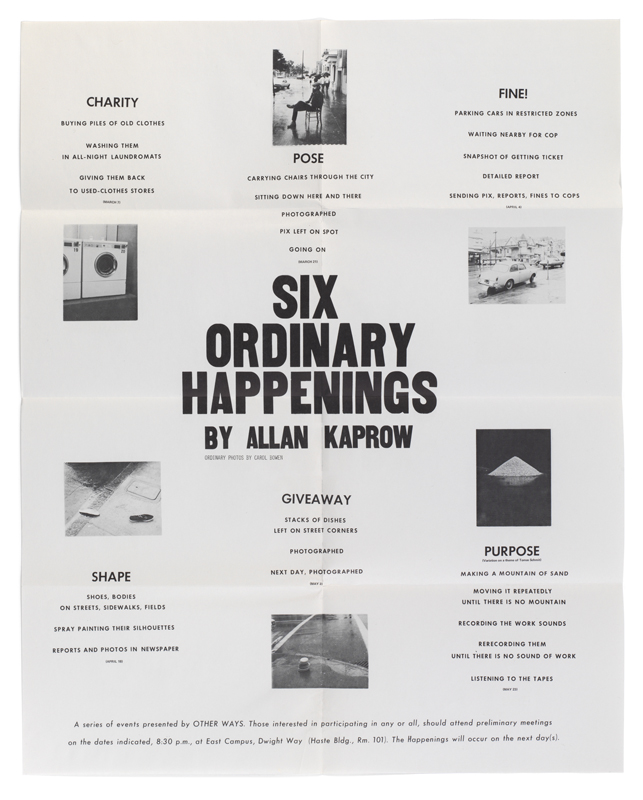
Allan Kaprow, Poster for Six Ordinary Happenings (with scores) © Allan Kaprow Estate, Courtesy Hauser & Wirth
Six ordinary happenings
From March 2 to May 23, 1969, Kaprow proposed Six Ordinary Happenings in downtown Berkeley, each inspired by a new utopian or revolutionary idea with west coast roots. This series of actions also marked the completion of the Other Ways program. The first happening, Charity, consisted of washing second-hand clothes that had been stored in charity shops. The second, Pose, offered participants (teachers, students, artists and activists), to wander the city, each with their own chair, and take Polaroid photos of themselves, leaving behind their portrait when finished. involved parking in a prohibited zone, waiting for the police to arrive, being issued a ticket, taking a picture of the fine alongside a statement of facts and paying the fine, then returning all this documentation to the police. Shape consisted of leaving traces of one’s silhouette outlined in spray paint in a public place. For Give Away Dishes, the second-to-last happening, huge piles of dirty dishes were left in the forgotten corners of the city—like phone booths—and then photographed. The final of the Six Ordinary Happenings, Purpose, was about creating small mountains of sand until it was all used up and then undoing, moving and rebuilding the ephemeral piles.
These Six Ordinary Happenings were less theatrical than the ones that come before them, for example Course (1969) which was based on a human chain and instituted an important break in Kaprow’s concept of action and participation. With Six Ordinary Happenings, it was not about an event that mobilized an anonymous ensemble of people, rather it was a public micro-action made up of identified people who understood and adhered completely to the idealistic goals of their collaborative gesture. In doing so, Kaprow became an “alogical strategist, no longer deliberately stopping the action, allowing it to follow its unpredictable course, observing where it led. It was at this very moment that Kaprow named what he was doing un-art30.” It is the beginning of the un-arting process, a broader movement than critical pedagogy and one that aims to de-professionalize the arts.
The end of spring 1969 represents the apex of the counter culture revolution in the United States and, sadly, the end of the Other Ways experience. Kaprow and Khol have a rather violent divergence in opinion on how to proceed. Khol leans more toward direct action that would lead to an unprecedented revolution in institutions, which is precisely where Allan Kaprow was mistrustful with a rather un-Zen vehemence. The crux of their difference went on to nourish the three essays The Education of the Un-Artist, the cornerstone for a body of work that veered gradually away from the earlier happenings in favor of numerous activities31. The CalArts campus would go on to become the historical setting for this incredible change.
Translation by Maya Dalinsky
This text is from a conference given during the “L’édition comme experience” days, initiated by Céline Chazalviel at Villa Arson (Nice), March 12 and 13, 2018, and led to an online publication created by Open Source Publishing and a student group: Villa Arson, edition experience
